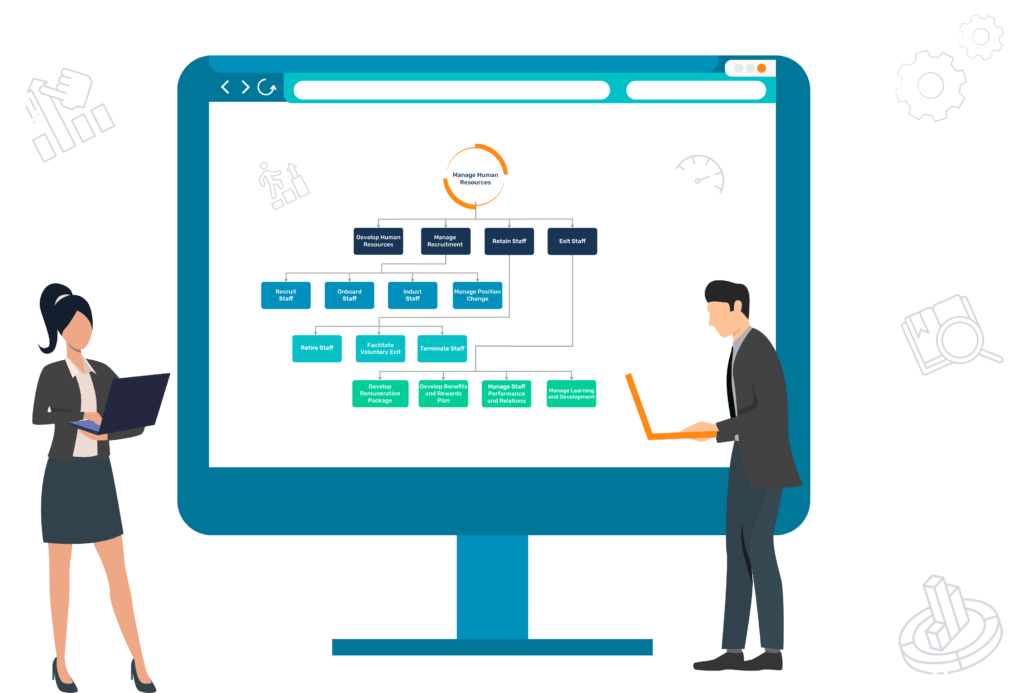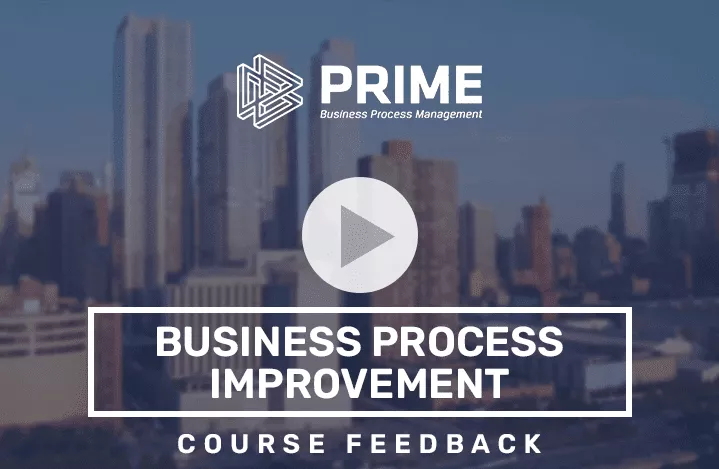Process Analysis and Improvement Course
Created and hosted by BPM Industry Experts

- Delivery : Online
- Course Material : Downloadable Cheatsheets, Practical Exercises and Workbook
MAXIMIZE PROCESS IMPROVEMENT RESULTS
Master advanced methods in process optimization through this highly reviewed and rated on-demand 13-hour program, featuring 47 lessons and 32 practical exercises. Gain skills and competency for understanding process waste and inefficiencies; conducting process time, cost and efficiency analysis; and creating simulations to test process improvement ideas. The curriculum has been developed by BPM experts with 20+ years of experience of working with global organizations, such as Pfizer, GE, Rolls Royce, Coca-Cola, Sanofi, etc.
Online Course Highlights

On-demand 47 lessons, including 6 demonstration videos and 8 answer videos

A practical Quiz after every module to reinforce the concepts learnt

Concepts gathered from over 200+ BPM implementations

32 exercises worth 8 hours

Access to advanced BPM tool to apply the concepts learned

Tried and tested techniques relevant to any industry
Note: It is a pre-requisite to have completed the BPM Foundations and Process Mapping Course to progress to the Business Process Analysis and Improvement Course, as it provides the base for many of the exercises.
+
Participants
+
Courses Delivered
+
Organizations Trained
This course is ideal for those who:
- Contribute on an operational level to a Business Process Improvement initiative
- Are establishing or leading a Business Process Management team
- Analyze and improve business processes
- Undertake and manage change in the organization
- Need to adopt a “process orientated” way of thinking
- Are seeking to gain a new skill set or change in career direction.
On completion of this course, you can:
- Identify business processes
- Model/ Map business processes
- Analyze process value, cost, time, efficiency
- Identify non-value-adding activities
- Conduct effective root cause analysis
- Understand business improvement opportunities
- Monitor business processes
- Manage business process change
- Lead BPM initiatives.
COURSE TOPICS
- Refresher on The PRIME Methodology
- Gathering process task attributes
- Cost Inputs and Organization Unit Settings
- Identifying non-value adding activities in the process
- Analyzing and calculating process value
- Analyzing and calculating process time
- How to plan resources with Full Time Equivalent (FTE)
- Analyzing and Calculating Process Cost
- Analyzing overhead Cost Settings
- Analyzing and Calculating Process Efficiency
- Analyzing and Consolidating Process Issues
- How to conduct effective root cause analysis
- Identifying and selecting process improvement ideas
- Estimating cost of change
- Creating simulated future state process
- Conducting time, cost and benefit analysis of improvement/ process simulation
- Gaining process approval for implementation
- Preparing and planning for the implementation
- Assigning and executing work packages
- Finalizing the future state process
- How to carry out impact analysis
- Identifying training requirements
- Delivering process training
- Preparing for Go Live
- Monitoring and adjusting processes for continuous improvement
- Making process improvement a BAU
- Ensuring collaborative approach for optimal improvement
- Calculate your value baseline
- Calculate your time baseline
- Calculate your cost baseline
- Calculate your efficiency baseline
- Consolidate process issues
- Conduct Root Cause Analysis for your process
- Estimate cost of change for your process
- Select Process Improvement Ideas
- Create Simulated Future State Process
- Calculate Simulation Time
- Calculate Simulation Cost
- Calculate Simulation Efficiency
- Calculate Time, Cost, and Benefit Analysis
- Plan Implementation for your process improvement
- Assign Work Packages
- Finalize Future State Process
- Identify Training Requirements
WHAT OUR PARTICIPANTS SAY









